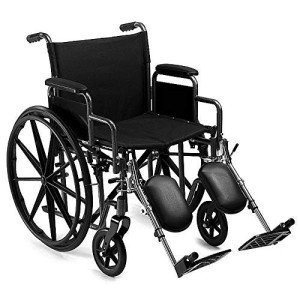Bariatric Wheelchair 24 Inch Seat 101: A Complete Guide For Beginners

Bonus Wide Bariatric Wheelchair With 24" Seat
Frame

Wheelchairs are usually produced in a basic width of 16" (narrow adult), 18" (basic grownup) or 20" (wide grownup). Nevertheless, some wheelchair users require a seat width wider than these standards. These additional broad bariatric wheelchairs are generally fitted by an expert and based upon the user's measurements.
In order to get the most comfortable and safe ride for guests, it is very important that wheelchairs are effectively sized. This suggests that the wheelchair should be able to accommodate the user's size while having the ability to steer in tight areas. This is why BriteLift provides tailored automobiles to transport wheelchair travelers. This consists of vans that can securely drive and maneuver big wheelchairs, enabling them to feel safe and comfy in every ride. This is the only way to offer the most effective transport for wheelchair travelers.
Seat
Bariatric wheelchairs are bigger than standard wheelchairs and are developed to accommodate people who are much heavier or larger. This additional broad bariatric wheelchair from Medline includes a 24" seat and a carbon steel frame with rust- and chip-resistant chrome plating. The wheelchair has tool-free push-button adjustable footrests and easy-to-clean vinyl upholstery. It can support as much as 500 lbs.
When choosing on the right wheelchair width, it is essential to measure the user sitting normally on a flat surface area across their best part of the lap which is normally their hips. It is likewise suggested that you use a yardstick instead of a determining tape as it tends to offer a more accurate measurement. If the user will be using a winter coat then an additional 2" should be included to the measurement of their seat width.
Weight Capacity
A bariatric wheelchair is generally bigger and heavier than standard wheelchairs. This is why they need more mindful maneuvering. Chauffeurs require to be trained in dealing with these passengers. Moreover, automobiles need to have enough room for these chairs along with ramps and wheelchair lifts. In addition, they require to understand how to schedule these rides in advance.
When choosing on the chair width, it is very important to determine the user's largest point in the seat, which is usually the hips. Lots of wheelchair manufacturers likewise provide a yardstick that can be used to help with this measurement. When measuring an individual's width, it is best to take the measurement straight across and not wrap the tape around their hips which can give a false reading.
In bariatric wheelchair 26 inch seat , the widest part of an individual's thighs might be larger than their hips so this must be considered when picking the chair width. In these circumstances, it is often essential to include an extra 2" to the chair width.
In basic, the weight capacity of a bariatric wheelchair should not be gone beyond under any scenarios or serious injury might result. When utilizing the chair, constantly be sure that it is on a steady and level surface with front casters pointing forward and wheel locks engaged. In addition, never lean or shift the center of gravity while being in the chair.
